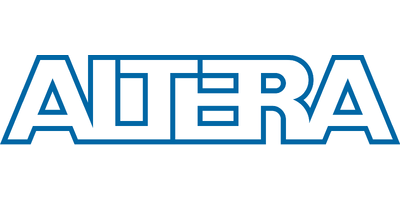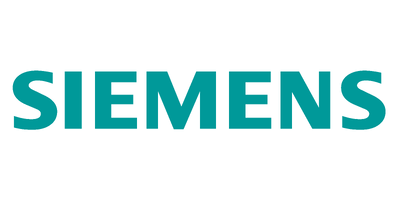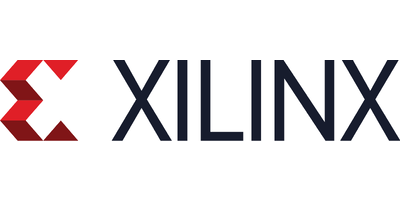1/8
DATA BRIEF
June 2004
For furth er information con tact your local ST sales office.
ST22N256
Smartcard 32-Bit RISC MCU with 256 Kb ytes EEPROM
Javacard™ HW Execution & Cryptographic Library
8
PRODUCT FEATURES
■32-BIT RISC CPU WITH 24-BIT LINEAR
MEMORY ADDRESSING
■368 KBYTE S USER ROM
■16 KBYTES USER RAM
■256K KBYT ES USER EEPRO M
32-BIT RISC CP U
■DUAL INSTRUCTION SET, JAVACARD™
AND NATIVE
■4-STAGE PIPELINE
■16 GENERAL PURPOSE 32-BIT REGISTERS,
AND SPECIAL REGISTER S
■4 MASKABLE INTERRUPT LEVELS
■SUPE R VISO R AN D USER MO DE S
SECURITY
■CPU SECURITY INSTRUCTIONS
–DE S and 3DES inst ructio ns
–Fast Multiply and Accum ulate instructions for
Publi c Key and Elliptic Curve Cryptography
–CRC instruction
■RANDOM NUMBER GENERATOR
■EEPROM FLASH PROGR AMMING MODE
■CLOCK AND POWER MANAGEMENT
■VOLTAGE AND CLOCK FREQUENCY
SENSORS
■ADVANCED MEMORY PROTECTION
–Memo r y Pr otection U nit for application
firewalling and peripheral access contro l
–Domain switchi ng securely controlled by
protected Context Stack
–Native/Jav a, Code/Data memory attributes
with 128-byte granularity
■FOUR WO RKING STACKS
–Java stack with both 16 and 32-bit accesses
–User and Supervisor mode stacks
–Security Context stack
Figure 1. Delivery Form
CRYPTOGRAPHIC LIBRARY
■AS YMMETRICA L ALGORITHMS
–Software Crypto librari es in separate ROM
area for efficient algorithm c oding using a s et
of advanced fun ctions. RSA, signatu re/
verification.
–RSA key calculation including Prime number
generation SHA -1
■SY MMET R IC AL AL GO R ITHMS
–DES, Triple DES, AES
CRYPTOGRAPHY PERFORMANCE
The following table provides the cryptographic
performances of the ST22N256 based on ST
Crypto Library.
Table 1. Preliminary Crypto gr aph ic
Performances
Algorithm Function Time(1)
1. Interna l clock at 33 MHz
RSA
1024 bits
Signature with CRT 79.0 ms
Signature without CRT(2)
2. CRT: Chin ese Rem i nd er The or em
242.0 ms
Verification (e=0x10001) 3.6 ms
RSA
2048 bits
Signature with CRT 485.0 ms
Signature without CRT 1.7 s
Verification (e=0x10001) 11.0 ms
DES Triple 18 µs
Single 8 µs
SHA-1 512-bit Block 194 µs
AES-128 Encryption including subkey
computation 85 µs
4
4
4
4
Micromodule Wafer
ST22N256
2/8
MEMORY
■HIGH L Y RELIABLE CMOS EEPROM
TECHNOLOGY
–Error Correction Code for si ngle bit fail within
a 32-bit word
–10 years data retention, 500,000 Erase/Write
cycles endurance
–1 to 128 bytes Erase or Program in 2 ms
typical
■HIGH PE RFORMA NCE MEMORY
–Dual memory buses for data and instructi on
–Byte, S hort (2) and Word (4) l oad and store
–Address auto -increme nt
OTHER FEATURES
■HARDWARE ASYNCHRONOUS SERIAL
INTERFACE (ASI)
–1M baud rate capab ilit y
–2 serial I/O port s compatibl e I SO 7816-3 T=0
and T=1
■2 USER CONFIGURABLE 12- BIT AND 16-BIT
TIMERS WITH INTERRUPT
■CENTRAL INTERRUPT CONTROLLER WITH
UP TO 16 INPUT LINES
■EXTERNAL CLOCK FROM 1 MHz TO 10 MHz
■1.62 V TO 5.5 V SUPPLY VOLTAGE
■TEMPERATURE RANGE -25° C to +85° C
■POWER SAVING STANDBY MODE
■ESD PROTE CTI ON GREA TER THAN 5000 V
■UNIQUE IDENTIF ICATIO N PER DIE
■TYPICAL INTE RNAL FREQUENCY UP TO
33 MHz
■SOFTWARE CONT ROLLED CLOCK
MANAGEMENT
3/8
ST22N256
DESCRIPTION
The ST22N256 is a m em ber of the SmartJ™ plat-
form using a 32-bit Reduced Instruction Set Com-
puter (RISC) core to execute both Native RISC
instructions and JavaCard™2.x Technology in-
struction (byte codes) directly.
Direct JavaCard™ byte code execution provides
high performance advantage over processors that
emulate the JavaCard™ byte code instruction set.
The product features a 24-bit wide linear address-
ing capability and includes User ROM, User RAM,
and User EEPROM.
Memory and Peripheral accesses are controlled
by a Memory Protection Unit t hat allows to imple-
ment firewalls between applications .
Memories are accessed via two different buses,
allowing simultaneous accesses to code and data.
Memory load and stores can be perf ormed at byt e,
short (2-bytes), or word (4-bytes) granularity, with
optional pointer auto increm ent.
The ST22 core includes dedicated DES instruc-
tions for Secret Key cryptography, and a f ast Mul-
tiply and Accumulate instruction for Public Key
cryptography (RSA) and Elliptic Curve cryptogra-
phy, and a CRC instruction. The ST22 core also
includes specific instructions for security.
The product has clock an d power man agem ent, 2
User configurable Timers, a Central Interrupt Con-
troller and a Random Number Gener ator.
Figure 2. SmartJ™ P latform EEPR O M Architecture
POWER MANAGEMENT
32-bit
RISC
CORE
CLOCK MANAGEMENT
MPU
RAM
BUS 2
BUS 1
SECURITY
TIMER
RNG
...
...
ASI
PERIPHERALS
ISO
7816
ROM EEPROM
ST22N256
4/8
The product has two execution modes. Java mode
is used w hen JavaCard™ 2.x byte codes are be-
ing executed. Native mode is used for long JavaC-
ard™ byte codes, Native methods and system
routines. The processor enters Java mode when a
dispatch (DISP) instruction is enc ountered. When
executing in Native mode, there are two privilege
levels, User and Supervisor. Some instructions
can only be executed in Supervisor mode.
Instructions are of variable length, from 1 to 4
bytes in Native m ode.
Specia l i nstruct ions ex ist for single -cycle st ack op -
erations, a frequent occurrence in Java code.
Short branches and conditional branche s within a
1 KByte block or the entire 16-MByte instruction
space are supported. T he product has four stages
of pipel ine in Native mode: f etch, decode, execute
and write-back. In Java mode, there are five stag-
es of pipeline: byte code-fetch, byte code-decode,
decode, execu te and write-back.
The CPU core has 16 32-bit general purpose reg-
isters, as well as special registers of variable
length.
The chip also features a very high performance
Asynchronous Serial Interface (ASI) to support
high speed serial communication protocols com-
patible with ISO 7816 standard.
It is manufactured using the highly reliable ST
CMOS E EPR OM technology.
EMBEDDED SOFTWARE
The Hardware Software Interface (HSI) imple-
ments the Hardware abstraction layer. It consists
of C interfaces to the EEPROM memory and pe-
ripherals. The drivers are:
–Non V ola t ile M e m o ry
–Asynchronous Seri al Interface
–Central Interrupt Controller
–Timer
–Random Num ber Generator
–Clock Manager
–Memo ry Protection Unit
–Sensors
–Security
Note:
–The HSI driver software layer is a C-oriented
API allowing efficient and secureaccess to the
peripherals and Non Volatile Memory for
programm ing or erasing.
–Only the OS and JavaCard™ Virtual Mac hi ne
(JVM) domains can access the HSI software
layer (In the following the term OS will refer to
the software layer that is directly interfaced to
the HSI).
CRYPTOGRAPHIC LIBRARY
ST proposes a complete set of firmware subrou-
tine s. T his lib rary is lo cated in a s pec ific R OM a r-
ea. It saves the operating system designer from
coding first layer funct ions and allo ws him to con-
centrate on algorithms, Public Key Cryptography
and Secret Key Cryptography protocols imple-
mentation.
The cryptographic library, located in a specific
ROM area, contains firmware functions for:
■AS YMMETRICA L ALGORITHMS:
–basic math ema tics including modular
squa ring and multiplication for various
lengths;
–modular exponentionati on;
–more elabo rate functions such as RSA
signatures and verifications for modulo length
up to 2048 bits long;
–full internal key generation for signatures/
verifications. This guarantees that the secret
key will never be known outside the chip and
contributes to the overall system security.
–long random numbe r generati on
–SHA-1
–RSA key generation
■SY MMET R IC AL AL GO R ITHMS
–DES, Triple DES
–AES-1 28, AES-192, AES-256
5/8
ST22N256
SOFTWARE DEVELOPMENT ENVIRONMENT
Modularity, flexibility and methodology are the key
words for the SmartJ™ Development Tools Plat-
form. Using the same interface, the developers are
able to create, compi le and debug a project.
The SmartJ™ Integrated Development environ-
ment (IDE) includes:
–A code Generation chain: C/C++ compiler,
assembler and linker. The assembler supports
both nat ive and JavaCard™ inst ru ctio n sets.
–An i nstruction set simulator, a cycle accurate
simulator, a C/C++ source level debugger and
hardware emulation tools.
OEM DEVELOPMENT LICENSE TYPES
The ST22N256 is a product based on the
SmartJ™ Platform. Developers have tw o t ypes of
licenses for access to the technology:
■STLDA
The SmartJ™ Technology License and Distri-
bution Agreement for Standard OEM Develop-
ers (Embedded Operating System and Applica-
tion Software developers) and Card Embed-
ders.
They must use the SmartJ™ Hardware Soft-
ware Interface (HSI) meta-layer communi cation
interface to access the product hardware re-
sources. The vali dation of th e Embedded Soft-
ware will be done using the Simulators of the
Code Validation Tool s chain.
■SPTLA (not yet available)
The SmartJ™ Platform Technology License
Agreement for OEM Platform Developers. The
SPTLA is for developers who need to develop a
customised architecture using the platform
blocks assembled with a proprietary custom
hardware plug-in logic block and associated
firmware. The complete Code Validation Tools
chain including the VHDL Emulator, must be
used for both the hardware, software develop-
ment integration and validation. The complete
Code Validation Tool chain is accessible to
OEM Platform Developers licensees only.
Figure 3. SmartJ™ Platform Concept
Note: 1) SmartJ™ Platform Tec hnology Li cense Agreeme nt required
2) SmartJ™ Technology Li cense an d Di stribution Ag reemen t required
SmartJ Platform
ST22 Core Plus
ROM RAM NVM
Size Definition
STD PERIPHERALS
& SECURITY
ASI, Tim ers, Security
Mechanisms,...
CUSTOMS PLUGS-IN (1)
Smart J IDE
SmartJ- Tools Pack-CD
SmartJ H/W Development
(not yet available)
VHDL Library (1)
SmartJ
ISO 15408 Certified
Emb edded Libr ary
HSI (2)
Memory & Std Peripherals Drivers
CRYPTO (2)
Certified Crypto Library
(DES, 3DES, RSA, SHA, AES...)
484
ST22N256
6/8
Figure 4. SmartJ™ IDE
7/8
ST22N256
Figure 5. SmartJ™ Code Ge nera t i on Tools
Figure 6. SmartJ™ C o de V ali dation Tools
C/C++
Standard
Libraries
C/C++ Compiler
Linker
C/C++ Source Asm Source
Native/Java Assembler
Object
Files
SCP 160c/PR Z
HSI
Library C ry p to .
Library
D ev ice S et-up
Application
Deb ugg er G UI
DEBUGG E R COR E
> Console.exe Third pa rty tools ST PLAYER
Integ rated D e velopment En viron m ent
SmartCard Pod
SmartC ard
Reader
Cycle
accurate
Simulator
Instruction
Set Sim u lator Monitor
FPGA
Board
160d
ASI
TimerRandom...
PC/SC
ST22N256
8/8
Information furnished is believed to be accurate and reliable. However, S TMi croelectronics assumes no responsibi lity for the consequences
of use of such information nor for any inf ringement of patents or other rights of third parties which may result from it s use. No license is granted
by i m pl i cation or oth erwise under any patent or paten t rights of STMi croelectron i cs . Specifications ment i oned in this publication are subject
to change without notice. This publication supersedes and replaces all information previously supplied. STMicroelectronics products are not
authorized for use as c ri tical components in lif e support devices or systems wi t hout express wri t ten approval of STM i croelectronics.
The ST l ogo i s a regist ered tra dem ark of STM i croelectronic s.
All other names are th e property of their respective o wners
© 200 4 STMicr oel ectro ni cs - All ri ghts reserved
STM i croelectron ics group of co mpanies
Aus tralia - B el gium - B razil - Ca nada - Ch i na - Czech Republic - F i nl and - Fra nce - Germ any - Hong K ong - India - Israel - Italy - Japan -
Malaysia - M a l t a - Moroc co - S i ngapore - Spain - Sweden - Swit zerlan d - United Kingdom - United States of Am eri ca
www.st.com



